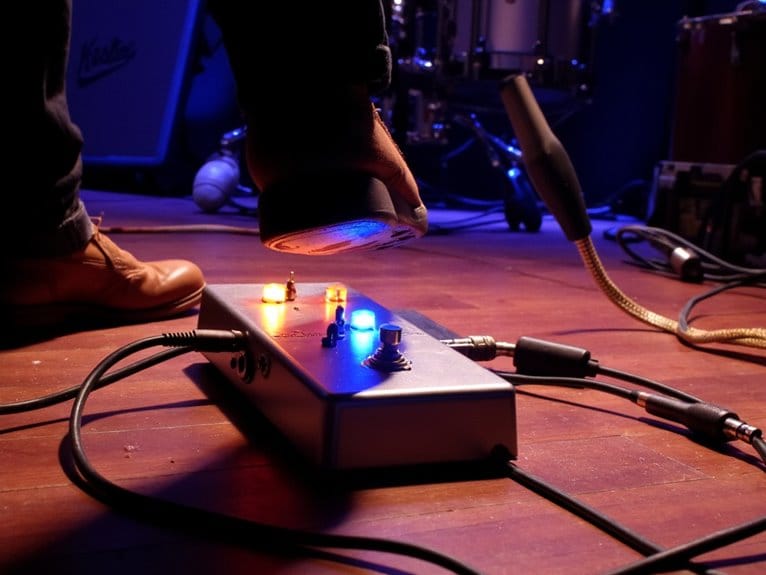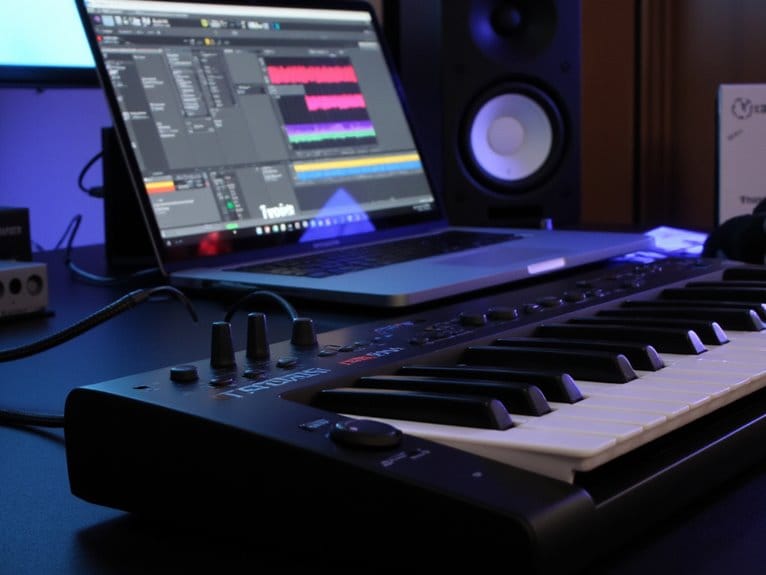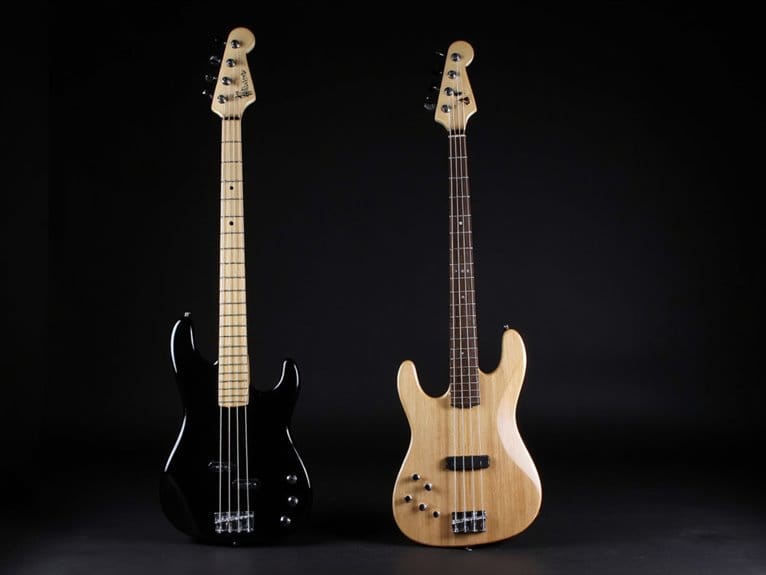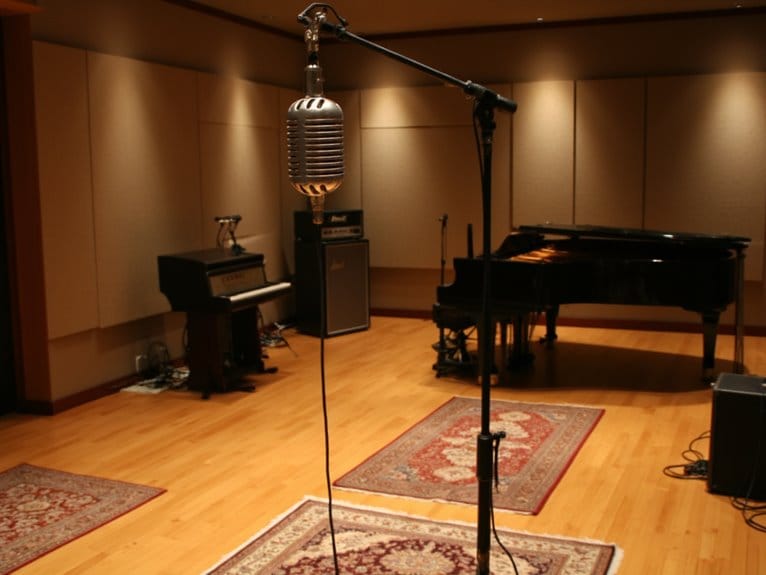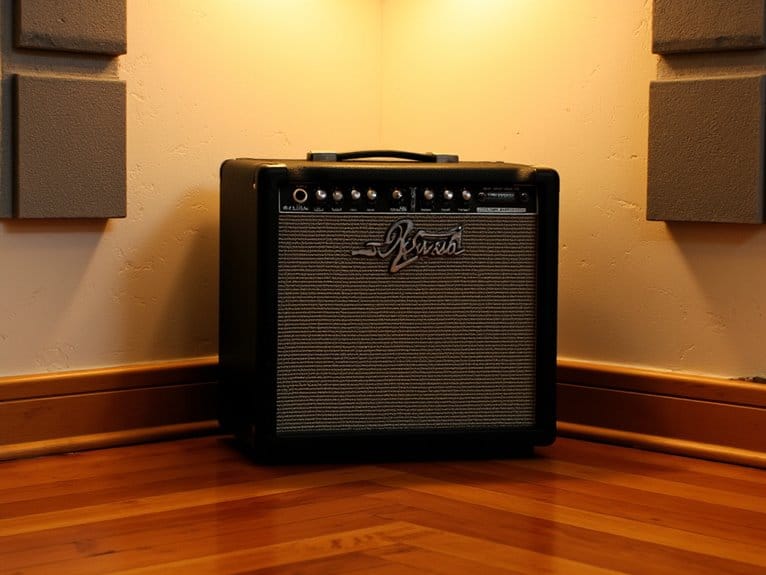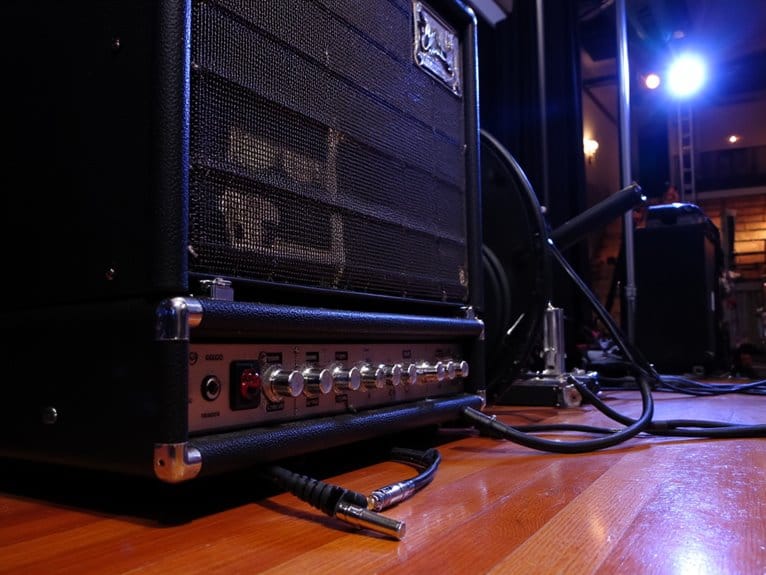Looper Pedal Techniques for Solo Performers
Master looper pedal techniques by starting with auto-record features and counting beats aloud to nail timing precision, which I’ve found eliminates most beginner frustrations. You’ll build compelling soundscapes by establishing foundational chord progressions first, then adding contrasting elements while managing frequency spectrum allocation to prevent sonic muddiness. Strategic effects like reverb create spatial depth, while pitch shifting generates bass lines for fuller arrangements. Consistent footswitch practice develops muscle memory for seamless live performance shifts that’ll open up advanced layering possibilities. Experimenting with different effects can significantly enhance your loops, so consider integrating the best guitar overdrive pedals into your setup for added richness and grit. As you become more comfortable with layering, you’ll discover how these pedals can complement your chosen melodies and harmonies, taking your sound to new heights. By consistently refining your technique and exploring new tools, you’ll unlock an expansive range of creative possibilities.
We are supported by our audience. When you purchase through links on our site, we may earn an affiliate commission, at no extra cost for you. Learn more.
Notable Insights
- Master footswitch coordination and timing precision through practice, starting with auto-record features to reduce performance pressure.
- Build dynamic soundscapes by establishing foundational patterns, then adding contrasting elements while managing layer density carefully.
- Plan frequency spectrum allocation strategically, using varied playing techniques and effects to create distinct sonic spaces.
- Structure loops according to song sections and practice seamless transitions to maintain audience engagement throughout performances.
- Utilize expression pedals for real-time volume control and enable footswitch effect toggling for enhanced dynamic performance capabilities.
Mastering Timing and Coordination Fundamentals
When I first started experimenting with looper pedals, I quickly discovered that timing isn’t just important-it’s absolutely everything, and the difference between a seamless, professional-sounding loop and an awkward, off-beat mess often comes down to milliseconds of precision.
You’ll need to develop timing precision while simultaneously mastering footswitch coordination, which honestly feels like patting your head and rubbing your stomach at first. I recommend starting with auto-record features to reduce initial pressure, then practicing simple loops while counting beats aloud.
Press the record switch exactly on the first beat, continue playing slightly past your intended endpoint, then stop on the next downbeat. Using internal metronomes helps maintain steady tempo, and gradual practice builds essential muscle memory for smooth performance flow.
Building Dynamic Soundscapes Through Strategic Layering
Although I’ve spent countless hours perfecting my timing fundamentals, I’ll admit that building compelling soundscapes requires an entirely different skill set-one that transforms simple loops into rich, evolving musical landscapes through careful layer planning and strategic execution.
Your foundation should establish chord progressions or rhythmic patterns first, then strategically add contrasting elements that maintain sonic clarity while avoiding frequency overlap. I’ve learned that controlling layer density prevents the muddy mess that kills audience engagement, while incorporating textural contrast through varied playing techniques-palm muting against open strumming, for instance-creates distinct sonic spaces.
Strategic layering demands sonic discipline-establish your foundation first, then add contrasting elements that breathe rather than compete for frequency space.
Rhythmic variation emerges when you alternate short loops within longer cycles, generating call-and-response effects that breathe life into repetitive structures. Just as hard-shell cases provide superior protection compared to soft alternatives, establishing a solid foundational loop offers the structural integrity needed to support more delicate melodic layers without compromising the overall sonic architecture. Proper cable management becomes crucial when incorporating multiple pedals into your looping setup, as organized signal chains prevent unwanted noise and ensure consistent audio quality throughout your performance.
- Plan your frequency spectrum allocation before recording to prevent sonic clutter
- Incorporate percussive elements as rhythmic enhancers rather than melodic competitors
- Use effects strategically on individual layers to create spatial depth and movement
Enhancing Your Sound With Effects and Creative Experimentation
Effects integration represents the gateway between basic looping and truly enchanting sonic artistry, where strategic application of reverb, delay, and modulation transforms simple recorded phrases into immersive, multi-dimensional experiences that rival full band productions.
Your reverb applications can create spatial depth across individual layers, while pitch shift experimentation allows you to generate bass lines or harmonic accompaniment from single melodic phrases.
I’ve found that strategic overdub techniques, combined with selective effect application, build complex texture manipulation without muddying your mix.
Sound layering becomes exponentially more powerful when you vary effects per loop track, creating distinct sonic spaces for each element.
Rhythm dynamics improve dramatically through synchronized delay timing, while footswitch control enables real-time effect toggling for dynamic contrast during performances.
Live Performance Management and Loop Control Strategies
Your mastery of effects and creative experimentation reaches its full potential only when paired with rock-solid live performance management, where split-second timing decisions and flawless loop control separate amateur bedroom noodling from enthralling stage presence.
Split-second timing decisions and flawless loop control separate amateur bedroom noodling from enthralling stage presence.
I’ve learned that successful loop changes depend entirely on maintaining consistent timing while building layers gradually, starting with simple rhythm parts before adding harmonies or solos to keep control.
- Practice footswitch commands like double-tapping to stop and long-press functions to build muscle memory for seamless hands-free operation
- Structure loops according to song sections (verse, chorus, breakdown) to guide audience engagement and maintain recognizable arrangements
- Connect directly to PA systems using stereo outputs while employing expression pedals for dynamic volume control during performance flow
On a final note
You’ve now got the essential toolkit for transforming your solo performances through strategic loop layering, timing precision, and creative effects integration. I’ve found that consistent practice with these techniques, combined with thoughtful performance management, will elevate your live shows from simple backing tracks to immersive musical experiences. Remember, you don’t need perfect execution immediately-focus on building confidence with basic loops first, then gradually incorporate more complex arrangements as your muscle memory develops.

